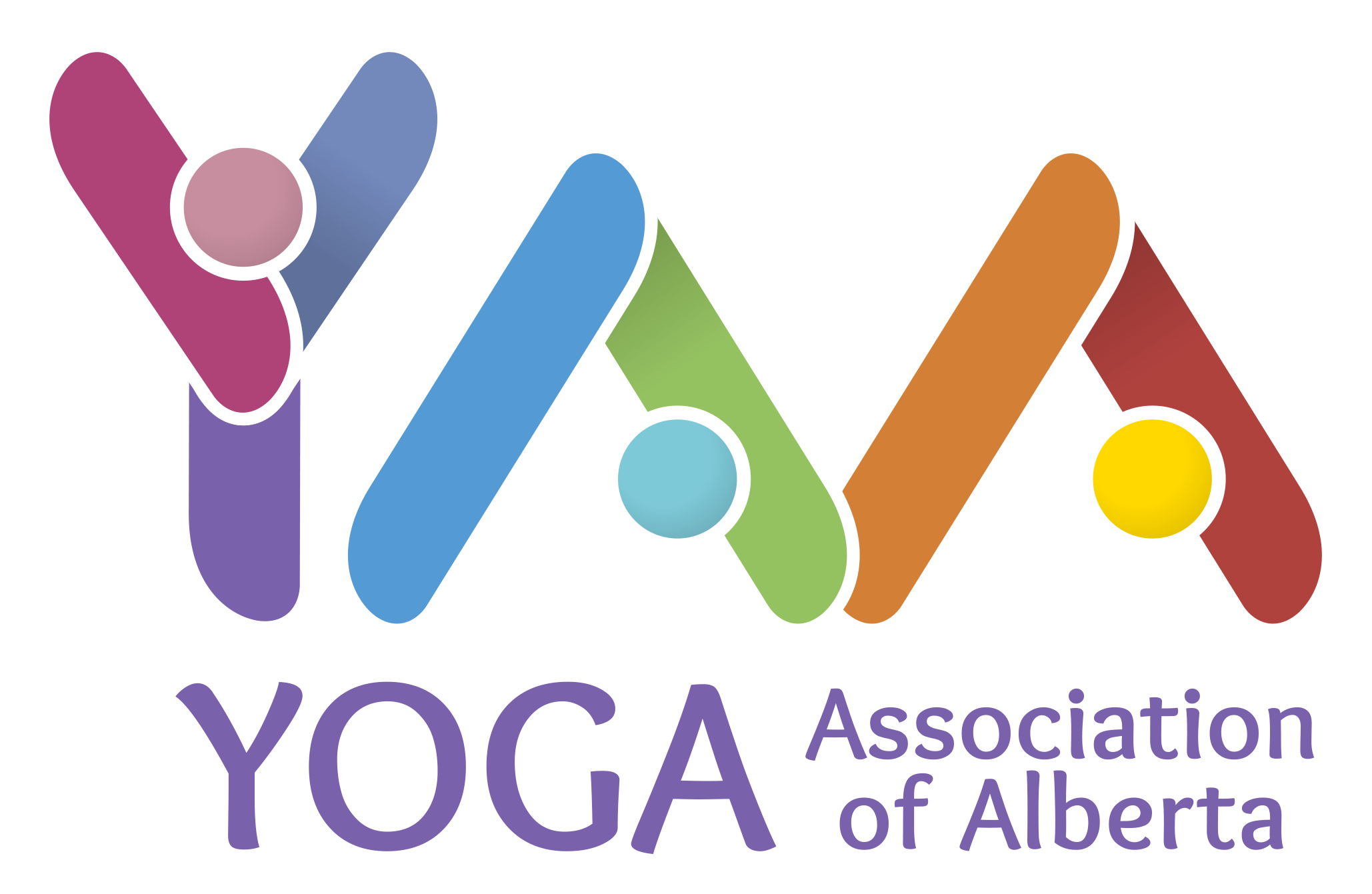Coordinator's Message
Responsibility and Relevance: Ethics in the Yoga Community
By Donalee Campbell, Coordinator, Teacher Training & Equivalency Certification Programs
(published in the Yoga Bridge Newsletter Autumn, 2017)
With the arrest warrant issued for Bikram Choudhury in May, a guru has come under suspicion and censure for misconduct.
It’s a situation that challenges anyone who is practising yoga to consider because few lineages have been left untouched by scandal. For the world, it creates more cynicism of that which already seems foreign and dangerous. For those on the inside, it resurrects all-too-familiar feelings of fear, doubt and mistrust.
I remember when John Friend made headlines in 2012, effectively crushing Anusara Yoga, which was then the fastest-growing yoga in North America. Many of us who had been deeply inspired by Friend and his methods put their money, time and dedication into obtaining certification under the Anusara name, only to be left with meaningless credentials as the once overflowing rooms emptied. Some tried to pick up the name and run with it, but without its charismatic leader, it seemed vacant and lost. We all found ourselves in a sullied organization with no leader, no direction and no consolation.
Everything that Friend had taught now came into question. What was once considered a brilliant system of alignment principles was now being criticized as inflexible and resistant to growth. Once a vibrant, passionate, highly trained nexus of light workers, the emotional support system of the kula (the spiritual community) evaporated. Instead of networking and billeting, sides were taken, camps formed and suspicions mounted. The Tantric teachings of universal love and intrinsic goodness once again fell into public ridicule after all we had done to lend new credence and respectability to the ancient philosophy – one that we truly believed could change the world from the inside out.
Historically, the teacher has always been paramount in the practice of yoga. Hindu myths tell us that Shiva himself passed down the teachings of yoga to benefit mankind. The Vedas were brought in by rishis (seers) and the rituals performed by brahmin priests. The Upanishads, whose name refers to the self-realized teacher who expounds upon the truth, were sacred teachings reserved for those who showed loyalty, discipline and aptitude. They required years of study with a guru or mentor. In the Bhagavad Gita, considered the most important spiritual text in India, the conflicted Arjuna is instructed by no less than Krishna himself, an avatar, divinity in living flesh. The Yoga Sutras, the first codification of the philosophy and practice of yoga, was dictated in terse, compact aphorisms that required memorization, as well as context, elaboration and exposition through a mentor in order to glean any depth of meaning at all.
So like a parent, the teacher of yoga is put into a role of authority over the student in the instruction of life’s lessons, with the promise of true freedom or mokṣa at stake – a heavy responsibility. (The word guru means one who brings light into the darkness). When this accountability is broken it can leave deep, scarring wounds, especially for those who come to yoga for healing from past abuse. If a teacher does not adhere to a substantial and reliable code of ethics, he or she risks grave consequences for both themselves and for their students.
The yamas and niyamas, ethical guidelines laid out in the Yoga Sutras, are there to protect us all on the path whether we consider ourselves as students or teachers, as ultimately we are always playing both roles. They explain the dharma or the universal laws that one must follow if one is to tread this path to freedom. (See page 12.)
According to B.K.S. Iyengar, Sutra II.31 states that the “Yamas are the great, mighty, universal vows, unconditioned by place, time and class.” They apply to us all, in all circumstances, and there is no getting around them as they are enforced through karma, the law of cause and effect which follows us through and beyond this physical life. And they apply to us on all levels – not only to our deeds, but to our words and our thoughts as well. Sutra II.33 advises that “Principles which run contrary to yama and niyama are to be countered with the knowledge of discrimination.” As humans, we often have doubts, instincts, habits and needs that bring us into compromised positions in relation to these principles, but we are invited to always do our best to recognize their wisdom and to live them from the heart.
The yamas and niyamas are the first two of eight limbs of yoga. They are the foundation for all other limbs, including āsana (posture), prānāyāma (breath control), pratyāhāra (sense withdrawal), dhāranā (concentration), dhyāna (meditation) and samādhi (ecstatic merging).
As parents we need to give our children both roots and wings. Until they learn to make sound decisions for themselves, it is our responsibility to keep them safe and make good choices for them. In order to feel grounded and secure, children need to feel unconditional love and have reliable guidelines to follow until they learn to recognize their own inner wisdom. When they start to make their own choices in life, they then have a stable foundation upon which to build and boundaries in which they can safely explore their freedom.
As yoga teachers it is incumbent on us to lay out these same foundational roots and guidelines for our students – not only in āsana, but for emotional, psychic and spiritual support as well. The eight limbs of yoga provide us with both roots and wings. The yamas and niyamas keep us safe as we traverse the most difficult path, the dark inroads of our psyches. Without these tools, these understandings of who and what we truly are, we are bound to cause pain and suffering to ourselves and to others. They apply as much to teachers as students, allowing us all to deal with the inevitable difficulties that arise in life and with each other.
At her 85th birthday celebration, long-time local yoga teacher and TV celebrity Gerda Krebs told me, “Yoga is to do good, and yoga is to be good”. Although it seems most of modern yoga is focused on the doing, its true power lies in the being. The yamas and niyamas teach us how to act with love until we discover, through samādhi, that love is who we are. As students, we are put into vulnerable positions that require surrender, trust and deep faith. But we are tasked to apply the teachings, following the path of yoga, to look inside for the truth, deep in our own hearts.
As a community, this challenge reminds us to engage our resources and strengthen our bonds. Unless we stand together as family, we cannot safeguard the integrity of tradition, protect the rights of the innocent or provide the comfort that lies in solidarity, in belonging. Herein lies our relevance, the importance of coming together as a whole.
I see two choices in this, as in any difficult matter. We can react in fear through hardening, become increasingly skeptical and resistant to change, or we can stay present with love, breathe life into the places that hurt and allow for an increase in freedom. This second choice requires an unshakeable foundation, alignment with our true nature and active engagement to support healing.
After the fall of Anusara, I felt betrayed and lost. But I was also comforted to have the soft cushioning of the members of the Yoga Association of Alberta (YAA). This fellowship left me knowing that I was not alone, but in a community where I always feel welcomed. This tribe has many wise elders to emulate, to turn to for guidance and advice. Always inclusive, with big hearts, and open arms, it is a place where I feel loved, even in our differences. And like a prodigal teenager, no matter how far I roam, with the existence of the YAA, I know I always have somewhere to return home. I have family. I have union. I have yoga.
The YAA Code of Ethics as adopted at the 1979 annual meeting of the Association is:
- To treat others with dignity, respect and consideration of their circumstances.
- To act in such a manner so as to maintain and honour the traditions of yoga.
- To study, practice and expand the knowledge of yoga.
- To improve the standards of yoga within the community.
The Guidelines for YAA Certified Teachers based on the above Code of Ethics is available here.
Donalee Campbell is now the Executive Director of the YAA, and a YAA Senior Teacher, teaching in Edmonton, Sherwood Park and Ardrossan.
For more articles relevant to teaching yoga in Alberta, please consider becoming a member of the Yoga Association of Alberta. With your membership you receive a subscription to the YAA newsletter Yoga Bridge: an informative publication containing yoga articles and upcoming events happening in the province-wide yoga community. There are three issues per year – spring, fall and winter.

